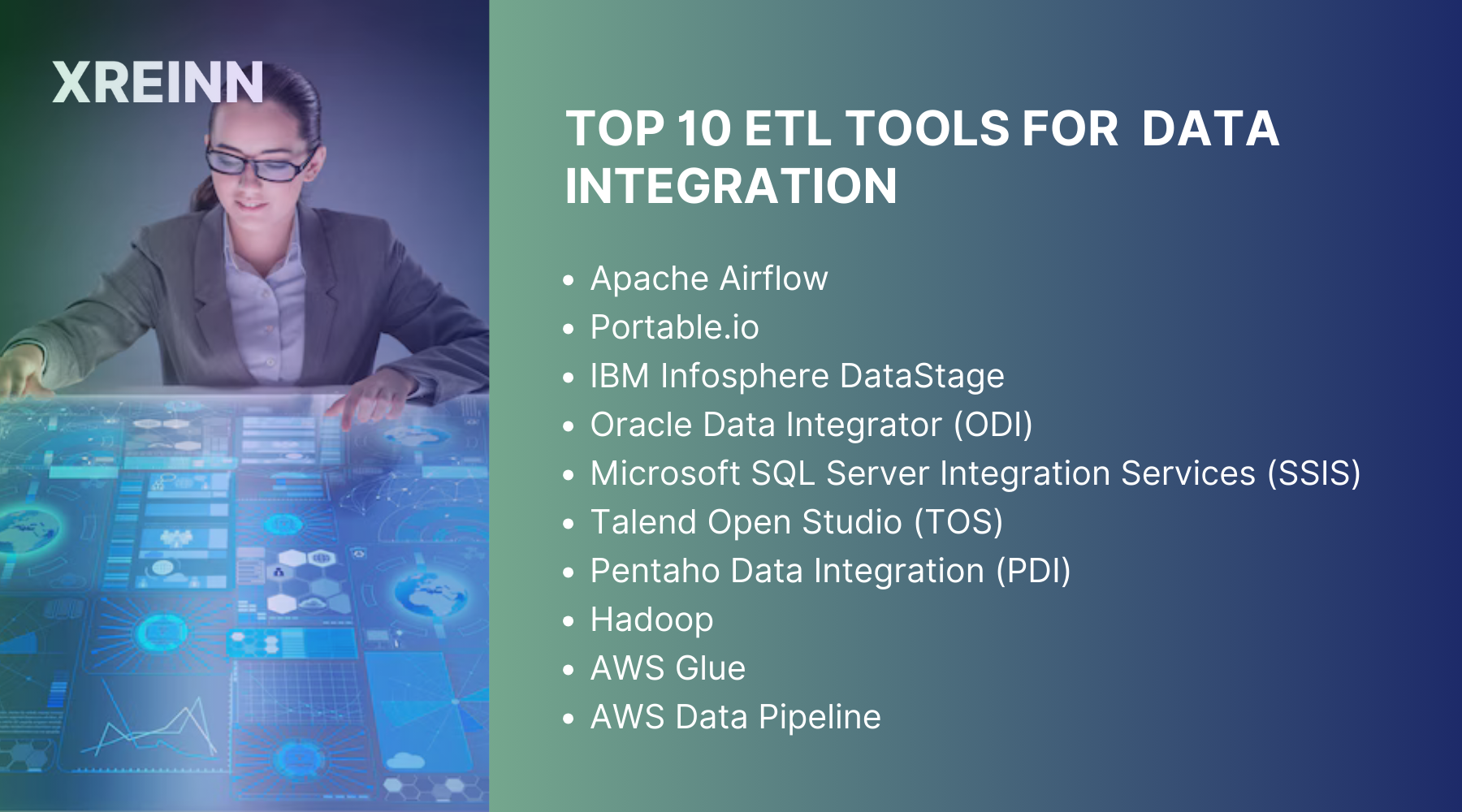Data Integration
Top 10 ETL Tools for Effective Data Integration
Jul 24, 2024
Managing can be complex, especially with large datasets and complicated workflows. Even the most experienced professionals face challenges when it comes to converting raw data into useful insights. Without the right tools, you risk data inconsistencies, operational inefficiencies, and costly decision-making errors. These issues can lead to missed opportunities and decreased customer satisfaction. Ensuring your data is consistently accurate and secure across systems is important.
In this article, you will find the top ETL tools that can streamline your data integration process and help maintain your competitive edge.
What is ETL?
ETL, which stands for Extract, Transform, Load, is a critical process in data management and analytics. It involves extracting data from various sources, transforming it into a usable format, and loading it into a target destination such as a data warehouse or a database. ETL ensures data accuracy, consistency, and reliability, making it easier for organizations to extract meaningful insights and make informed decisions based on their data.
By standardizing data from different sources, ETL processes help maintain data integrity and support compliance with industry regulations. Additionally, it allows businesses to streamline their data workflows, making analytics more efficient and impactful.
Top 10 ETL Tools for Effective Data Integration

Advanced ETL tools can significantly streamline data integration processes, especially when dealing with large datasets and complex workflows. This section focuses on how these tools work to improve your data integration tasks effectively.
1. Apache Airflow
Apache Airflow allows you to automatically author, schedule, and monitor workflows. By defining workflows with directed acyclic graphs (DAGs), you can visualize and manage task responsibilities. Airflow integrates smoothly with Apache Spark and Pandas, allowing you to build powerful data pipelines for extraction, transformation, loading, and analysis. Its scalability is a key advantage, and the active community provides extensive support and documentation, ensuring you can handle complex workflows efficiently.
2. Portable.io
Portable.io is best for creating custom no-code integrations. You can choose from a vast catalog of connectors to ingest data from various sources, even those often overlooked by other ETL providers. This platform allows you to manage data efficiently without writing code. Its powerful scalability and high performance ensure timely data management.
Additionally, Portable.io’s cost-effective pricing and advanced security features provide data protection and compliance, making it a comprehensive solution for your integration needs.
3. IBM Infosphere DataStage
IBM Infosphere DataStage offers a graphical framework for designing data pipelines that extract, transform, and load data from multiple sources. You can leverage its load balancing and parallelization features for fast data processing.
DataStage supports a wide range of data services, integrating seamlessly with other IBM Infosphere components. This allows you to develop, test, deploy, and monitor ETL jobs efficiently, ensuring high performance and reliability across your data workflows.
4. Oracle Data Integrator (ODI)
Oracle Data Integrator( ODI) helps you build, deploy, and manage complex data warehouses. With its out-of-the-box connectors for various databases, ODI simplifies data integration tasks. You can access multiple artifacts through its graphical user interface, managing data movement, synchronization, quality, and integration with ease. ODI’s ELT approach uses database computing power, optimizing performance for large-scale data processing and making your data tasks more efficient.
5. Microsoft SQL Server Integration Services (SSIS)
SSIS offers a powerful platform for data integration and transformation. Using its graphical interface, you can construct complex data flows and transformations with minimal coding. The platform includes built-in transformations that streamline development, and its deep integration with Microsoft products enhances functionality. Despite a steep learning curve, SSIS’s powerful features make it a go-to tool for managing smart data integration tasks effectively.
6. Talend Open Studio (TOS)
Talend Open Studio provides a user-friendly, open-source solution for data integration. You can drag and drop components to configure and connect them to data pipelines. TOS converts these graphical representations into Java and Perl code, enabling seamless integration. With a wide array of data connectors and an active open-source community, Talend offers extensive support, making it a cost-effective and versatile option for your data integration needs.
8. Hadoop
Hadoop provides an open-source framework for processing and storing big data in clusters of servers. Using HDFS for storage and MapReduce for data transformation, you can efficiently manage large-scale data processing. YARN handles resource management, while Hive translates SQL queries into MapReduce operations. Although implementing Hadoop can be costly due to the required computing power and expertise, its ability to handle massive datasets makes it indispensable for big data environments.
9. AWS Glue
AWS Glue is a serverless ETL tool that simplifies data integration. You can interact with it using a drag-and-drop GUI, Jupyter Notebook, or Python/Scala code. AWS Glue supports various data processing workloads, including ETL, ELT, batch, and streaming, without the need to manage infrastructure. This flexibility allows you to integrate and transform data from multiple sources efficiently, reducing the cost and complexity of data integration.
10. AWS Data Pipeline
AWS Data Pipeline allows seamless movement of data across AWS services or on-premise resources. You can specify the data to move, define transformation jobs or queries, and schedule these tasks. Its drag-and-drop console enhances usability, and the platform’s reliability, flexibility, and scalability ensure fault tolerance and configurability. This makes AWS Data Pipeline ideal for replicating data from Relational Database Service (RDS) and loading it onto Amazon Redshift.
Conclusion
Choosing the right ETL tool is important for effective data integration. By understanding how these tools work and using their unique strengths, you can streamline your data workflows and maximize the value of your data. Implementing these advanced ETL tools will improve your ability to manage complex data integration tasks and drive informed, data-driven decisions.

Data Analytics
Jun 27, 2024Master key concepts in data analytics with practical tips to enhance decision-making and achieve success in your projects and professional growth

Data Analytics
Jul 01, 2024Learn the essential stages of the data analytics workflow to turn your data into valuable business insights and drive growth.

